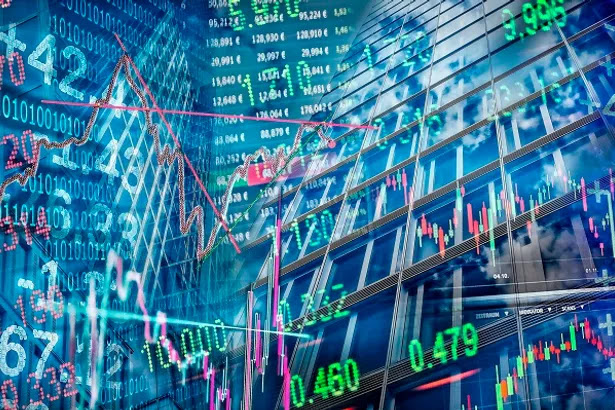What You Need to Know About Forex Trading
Foreign exchange (forex) trading is buying or selling one currency in exchange for another, in an attempt to extract a profit from the price movements. All currency trades involve two currencies, and trades are facilitated by a forex broker. Currency markets are open 24-hours a day during the week, which is an advantage over the stock market which is only open for a portion of each week day.
The forex industry is not heavily regulated and provides high leverage.
This makes it an attractive option for new traders starting out with limited capital (leverage increases the “buying power” of the trader’s capital). That said, there are also risks that forex traders need to be aware of, as well some basic information they should know before starting.
These articles provide an overview of these crucial basics, including what a currency pair is, currency pair symbols, trading hours, position sizing and pip values, how profits are made, leverage, capital requirements for trading, forex brokers and trading fees.
Currency Pairs in Forex Trading
Any forex trade actually involves two currencies. If you are going on a trip to Europe, you take your US dollars and exchange them euros. That’s a currency transaction—exchanging one currency for another. Forex traders do the same thing, except they are attempting to profit from changes in the prices of the currencies.
Currencies are always quoted relative to one another, called a pair. For example, the EUR/USD is the price of US dollars relative to euros.
There will be a price associated with the currency pair, and that price will constantly change. For example, if the price is 1.1000, that means it costs 1.10 US to buy one euro. If the rate was 1.2525, then it costs 1.2525 US to buy one euro.
The most heavily traded currency pairs in the world are associated with the US dollar and other major global currencies, including the Japanese yen (symbol: JPY), British pound (GBP), Australian dollar (AUD), New Zealand dollar (NZD), Euro (EUR), Swiss Franc (CHF) and the Canadian dollar (CAD). Therefore, the more commonly traded currencies are the EUR/USD, GBPUSD, AUD/USD, USD/CHF, NZD/USD, USD/JPY and USD/CAD.
Whatever order the currency pair is in reflects how much the second currency costs relative to one unit of the first, as mentioned above. To see how much it costs of the first currency to buy one unit of the second, flip the signs and then divide 1 by the price. For example, if the price of the USD/CAD is 1.20 that means it costs 1.20 Canadian to buy 1 US dollar. If we flip this around to CAD/USD, we can see how many US dollars it takes to buy one Canadian dollar. Divide 1 / 1.20 = 0.8333; it takes 0.8333 US dollars to buy one Canadian dollar.
All other global currencies also have symbols. Any symbol can be combined with another symbol to create a pair. That pair will then have a price based on how much of one currency it costs to buy the other.
Trading Hours for the Forex Market
The forex market is open 24-hours during the week, this is because there is always a global market open somewhere in the world.
Starting on Sunday evening (in the US) the Asian markets open, followed by the European markets and then the North/South American markets.
This process continues throughout the week until the US market (and all markets in the same time zone) closes for business on Friday. This means for US traders, there is continuous trading from Sunday night to Friday afternoon.
Because of the various global time zones and the 24-hour market, traders often use GMT time. Major global markets include Sydney, Tokyo, London New York. Sydney opens at 21:00 GMT, Tokyo at 23:00 GMT, London at 7:00 GMT and New York at 12:00 GMT. Note these times will change by one hour due to daylight savings time.
Forex Position Sizes and Pip Values
Currency pairs move in increments called pips. A pip is the fourth decimal place in the price of a currency pair. For example, in 1.5532, the forth decimal place (2) is worth one pip. If the price moves up to 1.5533, that is a one pip move.
Currency pairs are often quoted to five pips. The fifth decimal place is a fraction of a pip. For example, if the price moves from 1.11115 to 1.11120, that represents a half pip (0.00005) move.
Looking at all these numbers can get a bit confusing, but with practice, it becomes much easier to monitor these numbers, especially with the help of a forex price chart.
In pairs that involve the JPY, a pip is represented by the second decimal place. For example, if the price moves from 110.25 to 110.26, that is a one pip movement. The third decimal place, which is often provided, shows fractional pip movements.
Pips matter because pip movements determine profits and losses (discussed next). One of the major determinants of those profits and losses is the position size. Most forex brokers allow traders to trade in $1,000 increments (or other units of the currency, depending on the currency being traded).
If buying/selling 1,000 worth of the EUR/USD, one pip of movement will result in a $0.10 gain or loss. This is called the pip value. Buying/selling 10,0000 worth of the currency pair will result in a $1 gain or loss for each pip of movement. A 100,000 position means gaining or losing $10 per pip of movement.
1,000 units of currency is called a micro lot, 10,000 worth of currency is called a mini lot and 100,000 is called a standard lot. It is possible to trade in multiple lots, for example a trader could sell seven micro lots, which means a pip of movement will result in a $0.70 gain/loss.
Unfortunately, these pip values only apply when the USD is the second currency in the pair. For pairs that don’t involved the USD, or where the USD is listed first, the pip value will change as the price of the currency pair fluctuates. Pip values can also vary based on the currency deposited into the account (since buying a currency pair with yet another foreign currency means there are multiple transactions occurring). For a full rundown on pip values, see Calculating Pip Values.
How Profits are Generated in Forex Trading
Trading forex takes into account all that we have learned so far. We can buy or sell a currency pair, and whether that price moves in our favor will determine if we make or lose money. The amount of that profit/loss is determined by how many pips the price moves, the position size and the pip value.
Most forex traders use price charts to help determine which trades they will take. If they believe that the EUR/USD is going to rise, then they will buy the EUR/USD. The first currency in the pair is the “directional currency” on the chart. If the EUR is expected to rise relative to the USD, the price on the chart will rise. If the EUR is declining, the chart will show the pair falling.
Assume a trader believes the EUR/USD, which is currently trading at 1.05250, will rise. They buy one mini lot of that currency (10,000). The price does rise to 1.05450, and the trader exits. This is a 20 pip gain, and each pip is worth $1. Therefore, the trader made $20 on this trade. If instead the price dropped and the trader closed out the position with a loss at 1.05170, they lost 8 pips or $8 in this case.
The EUR/USD often moves between 75 and 120 pips per day. For more examples of profit potential see How Much Money Can I Make Day Trading Forex.
Forex prices are quoted with a bid and ask price. The bid is the price you can sell at right now. The ask is the price you can buy at right now. The difference between the bid and ask is called the spread. A large spread is typical of currency pairs that aren’t popular or that move a lot each day. Small spreads are typical of heavily traded currency pairs, such as the EUR/USD where the spread will often be one pip (or close to it) or smaller.
Paying a spread is a cost. If you buy the EUR/USD at the 1.05155 ask price, and then sell right away at the 1.05145 bid price, a pip has been lost without the price even moving.
Forex traders use a number of tools and strategies to help them decide when to get into trades, when to cut losses and when to take profits.
How Much Forex Leverage?
Gains and losses are magnified with the use of leverage. Leverage is borrowing money from the broker to increase the amount of capital available for trading. Forex brokers typically do not charge interest on borrowed funds/leverage.
Let’s assume a trader deposits $1,500 into a forex account, and they get 10:1 leverage. This means the trader can take positions up to $15,000 (or 1.5 mini lots). Let’s use the same example as before.
Assume a trader believes the EUR/USD, which is currently trading at 1.05250, will rise. They buy one mini lot of that currency (10,000). The price does rise to 1.05450, and the trader exits. This is a 20 pip gain, and each pip is worth $1. Therefore, the trader made $20 on this trade. If instead the price dropped and the trader closed out the position with a loss at 1.0517, the lost 8 pips or $8 in this case.
Without leverage our trader (who deposited $1,500) wouldn’t be able to take this trade, because it required buying $10,000 of currency to make that $20. But with leverage, the trader can utilize up to $15,000, making the trade possible. The $20 gain represents a 1.33 percent return the $1,500 account. Similarly, if the trader lost $20 their trade capital is reduced by 1.33 percent.
If a trader is unleveraged, they must have $10,000 in their account to make this trade. If they make $20 it represents a 0.2 percent return on account capital. That is much less than the leveraged trader. Of course, if they lost $20, it would be a smaller loss than the leveraged trader as well (in percentage terms).
Leverage magnifies gains and losses. It allows traders, who are winning, to build their capital quickly. The downside is that when losing, leverage will erode capital very quickly. See How Much Forex Leverage? to learn the right amount of forex leverage for you.
Capital Requirements for Trading Forex
We now have enough information to start formulating how much capital we need to trade forex. We need all the above information because it helps to define our risk and profit potential.
Forex traders should not risk more than 2 percent on any single trade. Day traders should be risking 1 percent or less. Risk, in this case, is measured as the distance between the entry point and stop loss level (where a losing trade is closed out), in pips. This is multiplied by the pip value and the position size to attain the dollars at risk on the trade. That amount should be less than 1 percent of the account balance.
For example, if a trader is researching EUR/USD strategies and finds that they typically will need a 50 pip stop loss, that means they need to risk at least $5 per trade (50 pips x $0.10/pip x 1 micro lot).
If attempting to only risk 1 percent per trade, this trader needs at least $500 in there account ($5 x 100) because $5 is 1 percent of $500. This is the absolute minimum required for this risk level.
If the trader is willing to risk 2 percent on a trade, then they will need to deposit $250 ($5 x 50), because 2 percent of $250 is $5.
These sample calculations can be used to determine how much capital is required for the specific forex strategy you are researching.
Whether day trading forex or swing trading, starting with at least $500 is recommended. Starting with $1,000 or more is better, and starting with $3,000+ increases the chances of producing an income.
Interest Rate Credits and Debits
Every currency has a home, and those homes (countries or zones) have different economic climates. Interest rates differ across the world and currency traders take part in this. If you buy euros and place those euros in a European bank, you will get a different interest rate than if you buy New Zealand dollars and place them in a New Zealand bank.
While forex brokers don’t typically charge interest on leverage (discussed above), each night forex traders are debited or credited interest based on their currency positions.
If a trader has bought the NZD/JPY pair for example, and interest rates are 3 percent in New Zealand and 0.5 percent in Japan, the trader will receive a small interest payment into their account each day at 5 PM EST. If the trade was held all year, theoretically the trader would make 2.5 percent off the interest payments alone. On the flip side, if a trader sells the NZD/JPY, then they have sold NZD in favor of buying JPY, and therefore will be debited every day they hold the position. Over the course of the year, the negative interest rate will cost the trader approximately 2.5 percent. Note though, that interest rates are subject to change throughout the year.
If a trader is leveraged these interest differentials will be magnified. For example, if a trader deposits $1,000 and then takes a $10,000 position (1 mini lot) in this pair, they could see their account grow or decline by approximately 25 percent based on interest from credit/debit alone. This trade requires at least 10:1 leverage.
Also, keep in mind that the price of the actual currency is always fluctuating. On a daily basis, or even on a year basis, the interest credits/debits are likely to be relatively small compared to the gains or losses based on price movements.
Forex Brokers and Forex Trading Fees
There are forex brokers all over the world. Since the forex market is not highly regulated in certain regions, there are plenty of unscrupulous and ill-run brokers out there.
When searching for a forex broker one of the primary things to look for is regulation and longevity. Ideally, the broker should be regulated in a major market such and the US, Great Britain, Canada, Australia, Japan or New Zealand, to name a few.
Brokers with a long track record are preferred over new brokers, as there are always new brokers popping up and many disappear just as quickly.
Also, consider what you are personally looking for from a forex broker. Some traders are more concerned with fees and trading costs, while others are more concerned with customer support.
One major consideration when choosing a broker is the fees they charge. Most brokers don’t charge fees for their trading platform or for receiving real-time prices/charts. Most brokers do charge a spread though (discussed above). Typically the lower the spread the better.
Many brokers only charge the spread, but don’t have any other fees. Other brokers may charge a commission, but if they do the spread is usually much smaller. Day traders are typically better off paying the small commission for the reduced spreads, while swing traders and long-term traders should be able to do fine with a typical broker that has slightly larger spreads but no commissions.
Commissions and spreads vary by broker. Compare them, along with other criteria to find a broker that works for you.
Final Word on Forex Trading
There is a lot to learn about forex trading. This is just the tip of the iceberg. Dig deeper into each one of these sections to learn more. Before trading real capital open a demo account and trade some fake money. It is one of the best ways to interact with the market and learn, without risking any real capital.
اكتشاف المزيد من فارس
اشترك للحصول على أحدث التدوينات المرسلة إلى بريدك الإلكتروني.









